
9 minute read
For the islands he wrote
THIS IMAGE:
Portrait of the poet George Mackay Brown (1921-96), taken on Orkney
In the centenary year of George Mackay Brown’s birth, we revisit Orkney and view the isles through the eyes of the local-born poet
Words by GAVIN D SMITH
CLOCKWISE, FROM TOP RIGHT:
Rackwick bothy on Hoy, Orkney; Stromness in Orkney, where Mackay Brown was born and bred; the Neolithic remains of Skara Brae, a UNESCO World Heritage Site Many writers are identi ed with speci c places. Take Thomas Hardy and Dorset, and William Wordsworth and the Lake District, for example. However, perhaps no author has been so intimately associated with their locale as George Mackay Brown.
For Mackay Brown, the Orkney Islands, where he was born, grew up and spent almost all his adult life, are at the heart of practically everything he wrote. For a writer of international reputation, he rarely strayed far from the little port of Stromness, where he rst saw the light of day 100 years ago, on 17 October 1921.
His father, John, was a postman and tailor, while his mother, Mhairi Mackay, was a native Gaelic speaker from northern Sutherland. George was the youngest of their six children, and his early life was blighted by tuberculosis.
The illness did, however, mean that he had time to read and write, rst contributing to the Orkney Herald newspaper in 1944. In later years he wrote a weekly column for The Orcadian, featuring musings on everything from a wartime German bombing raid on Orkney to his latest batch of home-brewed beer. Having discovered alcohol when the rst bar opened in Stromness after a period of prohibition, Brown had a lifelong love affair with a pint and a dram. He studied at Newbattle Abbey College near Edinburgh 1951-52 and later read English Literature at the University of Edinburgh, going on to commence teacher training, before deciding he was not cut out to teach and returning to Orkney in 1961. Back in Orkney, he converted to Roman Catholicism.
During his time in Edinburgh, Brown caroused in the ‘writers’ pubs’ of Rose Street with Scottish literary greats such as Hugh MacDiarmid, Sorley MacLean and Norman MacCaig, and fell in love with ‘the Muse of Rose Street’ Stella Cartwright, to whom he was brie y engaged. He wrote a birthday poem for her every year until she died in 1985, aged just 47.
Brown’s rst volume of verse, The Storm, was privately published in 1954, with just 300 copies being printed, making it an extremely rare volume today. Five years later, his collection of poems titled Loaves and Fishes was published by Hogarth Press and was very well received by critics and public alike. It was followed in 1965 by the poem cycle The Year of the Whale, which includes the poem ‘Hamnavoe Market’, (Stromness was formerly known as Hamnavoe). The opening lines of the poem typify Brown’s poetic style and subject matter.
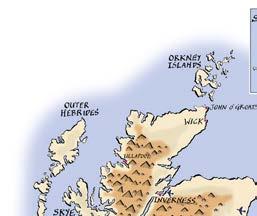

“They drove to the Market with ringing pockets. Folster found a girl Who put wounds on his face and throat, Small and diagonal, like red doves. Johnston stood beside the barrel. All day he stood there. He woke in a ditch, his mouth full of ashes.”
The style is spare and lean, and characters such as Folster and Johnston populate much of his poetry and ction. Despite the apparently parochial nature of his work, Brown’s themes are universal, and resonate far beyond Orkney.
He did not believe in ‘inspiration,’ declaring in a 1976 interview for a Scots Magazine feature, “I have my work to do, and I must just get on with it.”
© CHRONICLE/IMAGEBROKER/ALAMY/DOUGIE MILNE PHOTOGRAPHY/AERYON/SHUTTERSTOCK
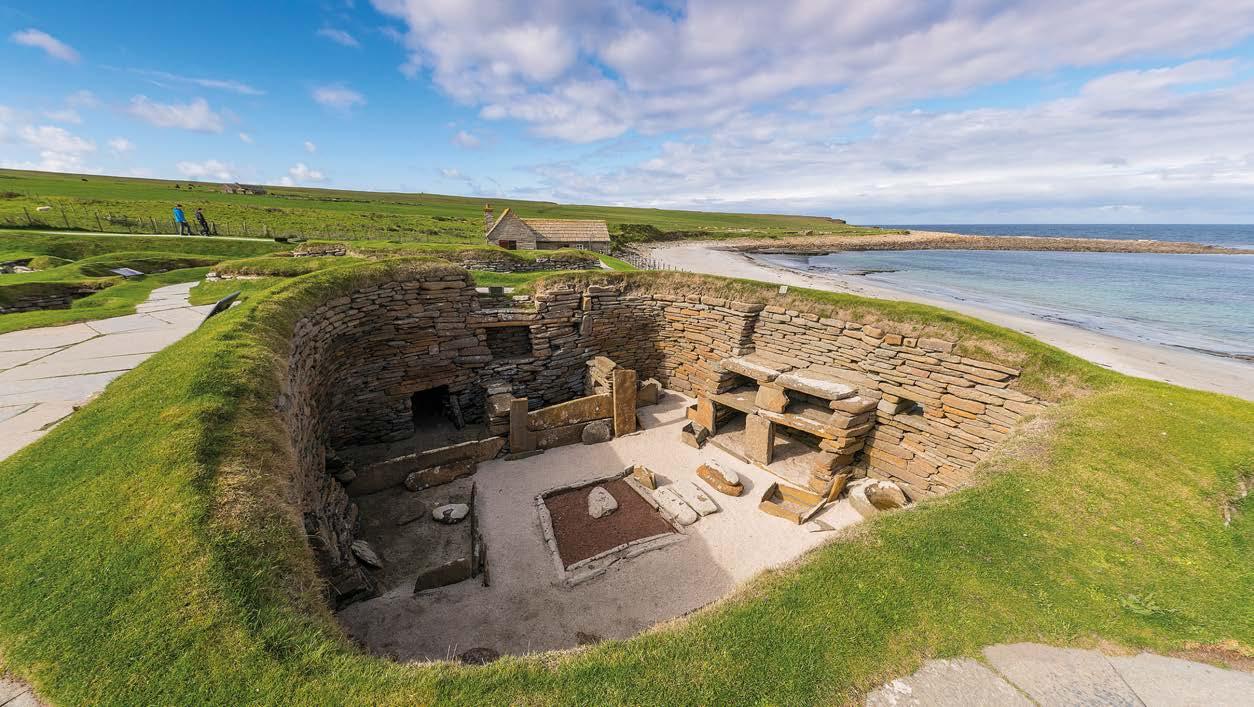
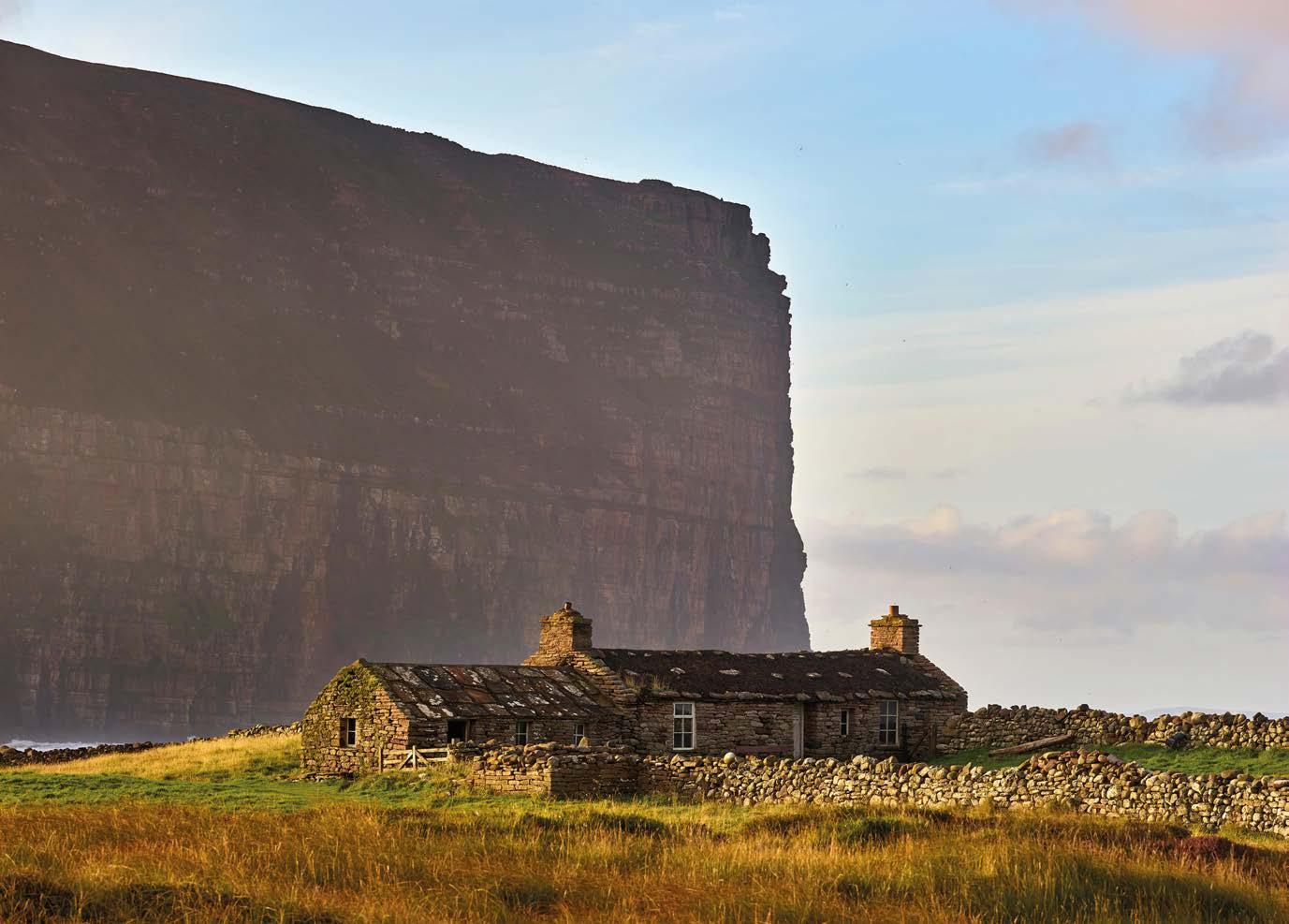
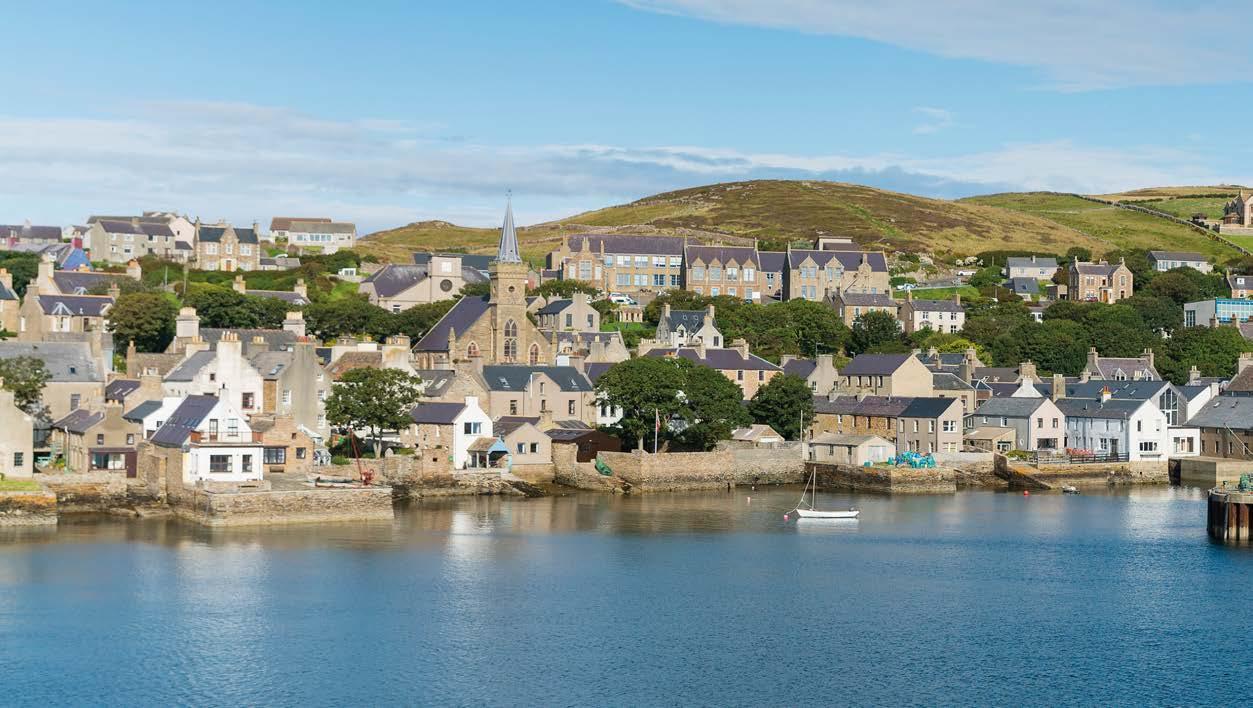
BELOW: Stromness Museum, which exhibits Orkney’s natural history and maritime past
Nonetheless, inspiration in some form came from the ordinary people of Orkney, the fishermen, the crofters, the landscapes and seascapes and the great heritage of the
Orkney Islands, stretching back beyond the surviving
Neolithic settlement of Skara Brae, established more than 5,000 years ago.
As Fleming wrote, “…he drinks deep of the wells of inspiration when reading the history and legends of the islands, in talking with his friends and when shopping along the main street in the afternoon.”As Brown himself said, “Every doorway has its own story. There’s history every step of the way. To me it’s like a tapestry.”
Apart from Stromness, Brown’s favourite place in the world was the island of Hoy, and in particular, Rackwick Bay, located on the island’s Atlantic coast.
His 1971 poem cycle Fishermen with Ploughs was set around Rackwick Bay, where derelict crofts litter the landscape above the shore, telling a sad story of depopulation, of rural dwellers abandoning smaller islands and moving into the towns of Stromness and Kirkwall, or leaving Orkney altogether. There is a melancholy beauty about Rackwick Bay, and Brown captures its essence perfectly.
One of the finest poems in Fishermen with Ploughs is titled ‘Dead Fires’, and opens with the lines:
“At Burnmouth the door hangs from a broke hinge
And the fire is out.
The windows of Shore empty sockets
And the hearth coldness.”
A sense of yearning for a lost and better past is a crucial element of Brown’s work. In his book of essays and poems An Orkney Tapestry (1969) he writes “The notion of progress is a cancer that makes an elemental community look better, and induces a euphoria, while it drains the life out of it remorselessly.” The sense of change destroying some of the finest aspects of existence is central to his best-known novel Greenvoe (1972). Brown was far from being all doom and gloom, however, with his dry sense of humour and strong affection for his fellow Orcadians. He also entertained many admirers of his work, who stopped by his modest flat in Stromness for a chat and to have a book signed.
His work was widely praised by other fellow writers. Reviewing the short story collection, A Time to Keep (1969), the Cornish poet and teacher Charles Causley declared that “I don’t know anyone writing in this particular genre today who comes within a thousand miles of him.”
Among his many awards and prizes, Brown received an OBE in 1974 and was shortlisted for the Booker Prize in 1994 for his novel Beside the Ocean of Time. He died on 13 April 1996, aged 74, and is buried in the Warbeth Kirkyard, overlooking Hoy Sound. His simple gravestone bears the inscription ‘Carve the runes then be content with silence,’ taken from his poem ‘A Work for Poets’. His autobiography For the Islands I Sing was published posthumously.
Perhaps David S Robb sums up George Mackay Brown best in an essay for the Dictionary of Literary Biography, declaring him to be “…unique among modern British writers in the scope, nature, and integrity of his achievements ... Another dimension that sets him apart ... is the vision that informs his work, a vision made up of values drawn from his religion, his sense of history, his literary allegiances, and his devotion to Orkney.” S

© VISIT SCOTLAND/KENNY LAM




Scottish Heritage USA, Inc.
Putting pride in your heritage to work for you
A Non-profit Organization providing student scholarships for highland dance and bagpiping and making charitable donations to the National Trust for Scotland and other non-profit organizations that promote Scottish tradition, history, crafts and culture here in the states and abroad Scottish Gaelic studies at UNC Chapel Hill was largely funded by Scottish Heritage USA for the academic years of 2018-20 and plans are currently in process to fund a Department of Gaelic Studies at UNC!
WE ARE ALSO A PROUD SPONSOR OF THE GRANDFATHER MT. HIGHLAND GAMES CULTURAL VILLAGE!







ARE YOU PLANNING A TRIP TO SCOTLAND?
Hill House - Scottish Heritage contributed funds to help preserve this iconic building
Before you go check out the deals you get from membership in Scottish Heritage USA

• Reciprocal membership to the National Trust for Scotland Foundation, USA • Free Admission to all (over 70) National Trust for Scotland properties • Free Admission to 27 National Trust for Historic Preservation (in the US) • Annual subscription (six issues per year) to “Scotland” magazine • Annual subscription to the National Trust’s magazine (3 times per year) • INVITATION to members only reception following the
GMH Games AND for all new members, the first time you attend the reception it is FREE! • DISCOUNTS on all Scottish Heritage USA tartan merchandise • • Plus, Scottish Heritage’s Newsletter
Memberships range from $35 and up and are well worth the price! Call now or visit our website for more information

P.O. Box 457, Pinehurst, NC 28370-0457 ♦ www.scottishheritageusa.org ♦ 910.295.4448
Eisenhower Suite at Culzean Castle-Scottish Heritage funded the refurbishing and reconstruction of this guest suite


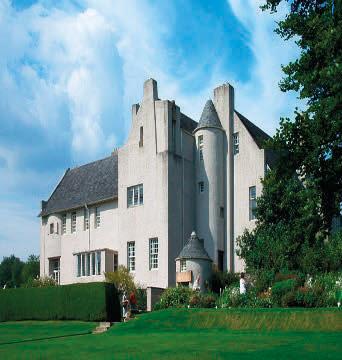






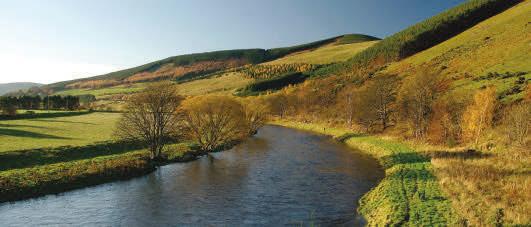
Lochcarron of Scotland weavers of authentic tartans, Highland Wear, accessories and homeware...
... from kilt to catwalk

Visit our online shop www.lochcarron.com
hello@lochcarron.com | +44 (0)1750 726025
For Private Fittings by appointment contact Anna in our Head Office in Selkirk anna.douglas@lochcarron.com +44 (0)1750 726100 Or visit The Weavers Shop in Wester Ross IV54 8YH +44 (0)1520 722212










